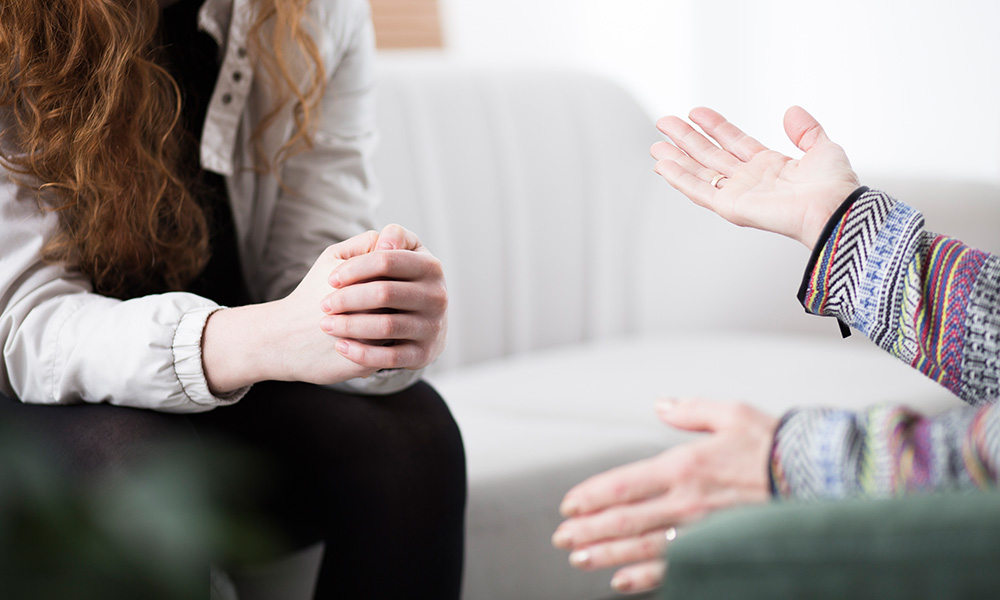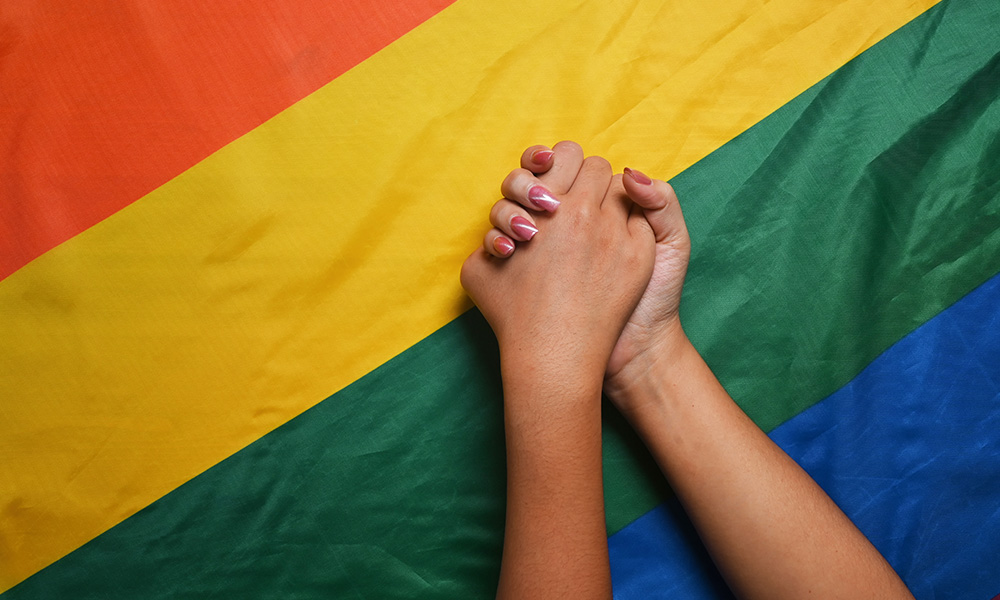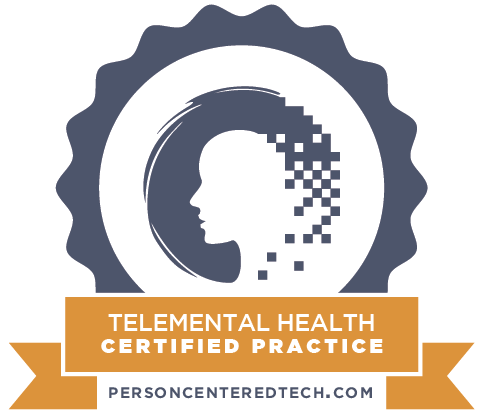Resilience – Self-Care – Intention and the ’S
We all know about self-care, and resilience has become a word I seem to hear around every corner these days. The horse is the true definition of resilience. They have evolved from small pig-like, three toed creatures into the majestic strong animals I have the pleasure to work with every day. They embody the definition of resilience: “The capacity to recover quickly from difficulties.” How do we develop this in ourselves, our children, our employees?
While I am a licensed professional counselor and my perspective comes from my work in the Eagala (www.eagala.org) model of equine-assisted psychotherapy, I hope I am able to help the reader see that this is relevant to everyone, every day, everywhere.
In our Equine Assisted Growth and Learning Association (EAGALA) trainings we learn to use the acronym SPUD’S. We look for Shifts, Patterns, Uniqueness, and Discrepancies in the actions and words of our clients and the presentation and interactions of the horses. I chose to carry this out of the office and into my world. It forces me to pause and helps me stay objective. The SPUD is the easy part. It is the ‘S that gets tricky. We run entire workshops focused on the ’S. It’s the three fingers pointing back at yourself when you are pointing at someone or something else. It represents our own Stuff. As a therapist I need to continually be aware of my triggers, projection, transference, counter transference etc and how it affects my interactions in the world. I have to be willing to actively engage in my own therapeutic work as it presents. In the office, it can be easy to miss or to put aside the ’S. However, in the arena it is another story. The horses know when someone is incongruent and/or they know when we are bringing our “Stuff” into the arena. They will call us out right in front of our clients. We have to check our “stuff” at the gate. If there is something lingering out of our awareness they will call it to attention.
Stepping out of the arena and into the world, want can we do to minimize how our “stuff” impacts our relationships? I believe self-care is key. I see self-care as having 3 levels – the big get away vacations and our own therapy, the common bubble baths, massages, treat yourself sort of things, and the moment to moment daily practices that become part of who we are. All are important, but it is in the daily practices that we build resilience. The resilience skills that we teach as daily practices become the pebble in the water. First an increase in interoception – with this comes increased awareness and mindfulness – followed by greater insight to identify the ’S and address them. By knowing ourselves better from the inside out, we can then better engage with those around us. As a bonus, when we have mastered these skills and regulate ourselves, others become better able to regulate themselves. Experiment with this… the next time your kids, coworkers, family members are quarreling or having a disagreement take a moment to pause and notice your breath. Maybe take a step closer if you can. Just keep noticing your breath. See what happens. I know it sounds way too simple. It is simple – it is not easy. This is where intention comes to play. When we can pause and be more intentional in our interactions and observations we can often step away from our ’S in the moment and feel more confident in addressing them in a professional manner.
I tell our clients that the horses are here to meet them in the moment, without judgment and ask them to offer themselves the same. The last spin I will put on this blog is a reminder to look at your world through the lens of information. The lens of judgment does not allow for healing, growth or learning. Encounter your ’S with excitement in the knowing that as you address them you become lighter, brighter, more self-aware, and better able to engage in the world with clarity and intention.
As a 28 year old non-binary Trans masculine individual who has gone through multiple self-evaluation periods, I’ve come to the conclusion, deep down we are all beings looking to grow strongly and beautifully. It is partially our environment that either hinders or helps us do so – PCS has provided a supportive space which made room for me personally to garden an environment that allowed growth. I realized, the grass is greener where we water it.
I began to really sit with myself and I began to water myself. I started to focus on my physical health with the theory that, “If I don’t use it, I lose it.” I began to focus on my mental health as I needed to fix the foundation I was building within. The more I stayed in tune with what I wanted instead of what others may have wanted of me, little shifts subtly took place. I started to plant seeds of how I pictured my garden, not one envisioned for me.
In a world where it seems scary to be authentically who I am, I haven’t allowed it to keep me from blossoming. We were meant to go through seasonal circumstances and within each season, there’s handsomeness and beauty. There’s self-love that transpires and when we have a hold of it, we shine.
My recent light brought me to write the below poem,
“March coming to a close,
Yet I’m more open than ever.
An anticipated chapter; I knew this time would come.
This time where every step feels worth the lunge.
A time where the shoes I’m wearing finally fit.
Comfortably.
I finally see – myself in mirrors.
I finally hear – myself in echoes.
And somehow,
It’s like, I finally let go.
I let go of fear,
And replaced it with faith.
I let go of anger,
And replaced it with love.
I let go of judgment,
And replaced it with acceptance.
Yesterday prepared me for today.
God knew I would see this day.
I was always worth it,
I just had to believe it too.”
And, I believe in you.
-Vané R. Moreno
He/him/She/her
Social media has changed the way we communicate, socialize, obtain information, and shape our opinions about the world, others, and ourselves and while this is very much a profound influence on our lives, many of us haven’t figured out how to effectively parent our children in relationship to it.
Here are some tips that may help:
1. Accept that social media is here to stay. It is understandable that many parents are fearful and therefore are not fully embracing of social media. However, coming from a place of fear doesn’t promote understanding, and the reality is that similar to things like pornography or drugs and alcohol, wanting these things to go away or trying to altogether avoid conversations about these things does not work. At some point young people will be exposed to them and there is no magic social media, sex, or drug/alcohol fairy that shows up when kids need guidance. As parents, we need to show up in that role.
2. In order to effectively manage your child’s social media use, you have to expose yourself to it, engage with it, and understand it. Have your child introduce their favorite app(s) and tell you what they like about it and teach you how to use it. Make it fun. Try to avoid criticizing social media, as this will reinforce the attitude of, “My parents just don’t get it.” This does not mean as parents we have to agree with all of what our kids are doing, or posting, or sharing – it is more about wanting them to see us as willing to listen and learn and maybe to consider that as their “old, out of touch” parents we might actually know a little bit of what we’re talking about. Judgement will only get in the way of what you really want — to have a closer relationship with you kids.
3. Find ways to connect vs. reject. One way to do this is to make it fun! Send messages through snapchat, tell them to make their bed with a goofy face filter, or try not to embarrass yourself doing a TikTok dance. One added benefit, is that when children realize they cannot so easily get away with things online, they are more transparent. Also, this can promote kids thinking twice and editing before sending a message or posting something inappropriate. If not, you will be there to help them manage it. Young people are uniquely sensitive to the judgment of parents, teachers, friends, and the digital community. It might be that social media heightens this sensitivity and drives impulsiveness or pre-occupation with popularity, acceptance, or body image, but it did not create these issues. Yes, it can make it harder and more pressure-filled for kids, but if we make it all about social media, we are missing the big picture.
4. Set up a plan – talk to your kids about what they might be exposed to ahead of time. Let them know they might see things that confuse them, upset them, or even scare them. Work to establish yourself as a person who they can turn to without fear of losing the privilege. Losing access for a time may be a necessary outcome, but do your best to not threaten it and to first understand what happened without shaming. One tip is to avoid taking phones or social media away as a punishment if the problematic behavior was not related to that social media use. Remember the long-term goal is for our kids to learn how to avoid the pitfalls of social media use for themselves. Lastly, make sure to talk to other parents, therapists, or attend meetings/webinars on the subject. Do your best to stay informed so you can meet the needs of your kids.
Sam Hardwig MA, LPC, CSAT CANDIDATE
Family, friends, and strangers often ask me what it’s like being a therapist. It is important to note: I just got here, so I may not be the best person to ask at this point. I completed my Doctorate in Psychology a few months ago, and I’m now completing a postdoctoral residency at Psychological Counseling Services.
I am not new to life, however, nor am I new to the trauma that can occur once thrown into this difficult and beautiful life. I am a combat veteran (Afghanistan) where I was a medic for the United States Army. I played in rock-n-roll bands for 20 years prior to that, and I worked in the hospitality industry for a decade as well. Most of it was really fun. You could say that I have lived among the people, dealing with real life problems, making all sorts of human mistakes. I then transformed several messes into something more productive and beautiful. I joke with my colleagues that I got to the game (clinical psychology) late because I spent my first three decades gathering personal research on trauma. Though I joke, it is very true. Now, I’m a pre-licensed clinical psychologist, and people of all kinds ask me what it’s like. They want to know what it is like holding someone’s darkest secrets and knowing the most intimate details of their life.
So far, I can tell you that it is sacred. I walk on hallowed ground every moment that I am in the presence of a client. Being a therapist can be demanding, as it requires that you do your own inner work, applying the knowledge you learn in school to your own personal life. It means getting in touch with your inner child and listening. It means getting in touch with your most vulnerable self and daring to heal. It means learning to say yes and learning to say no. It means having boundaries with family and friends, with all people truly. Being a therapist means waking up before the job to work out or taking your dog around the block as the sun is rising. It is practicing the same mindfulness you teach your clients. It’s practicing tolerance in traffic, in politics, in uncomfortable emotions. It’s sharing space. It’s taking healthy chances. It’s investing in your cells, so it is drinking water and balancing your diet. It’s going to bed early. It’s being physically and mentally active, socializing, and cooperating within a community. It’s having compassion for yourself when you stumble. Being a therapist is turning your own past trauma into healing and growth, subsequently shining a light for others.
A few have said, “Therapists sound superhuman.” I answer with this: It is simply important that we therapists practice what we preach, that we lead by example, that we ensure what we bring to the table is our inner, wiser Self who has been tried and is true, who is fluid and ever-changing, ever-growing, always being. No, we’re not superhuman. We are extra human, and our responsibility to our clients is “to do good and to do no harm.” It means all the things mentioned throughout this article. We are not superhuman. We are extra human, falling and succeeding in our own everyday lives often and regularly.
Just like my clients, I encounter challenges in managing my relationships with myself and others in healthy ways. Because of the work I do, I am surrounded by information and ideas to help me live my life and connect with others in a healthier way. In order to be congruent in my work and personal life, I never recommend doing something that I am unwilling to do. Therefore, in teaching or recommending specific things to my clients, I feel myself challenged to not only talk the talk, but walk the walk.
It seems that we are biologically wired to avoid uncomfortable situations and feelings. Maybe it is the old part of our brain telling us we are unsafe and to avoid these experiences at all cost. However, we know that although avoidance may feel better in the short term, it leads to all sorts of social and personal issues in the long run such as disconnection and internal conflict. Moreover, I think we know that being uncomfortable leads to growth and change, to learning and doing things better. Knowing things intellectually and being able to do them with an open heart are two very different things.
I am going to write about a few of my personal challenges and how I cope. It feels vulnerable to write about these challenges, because I tell myself that as the professional, I should know better or do better. However, I know that this thinking is not healthy and contributes to my not walking the walk. I believe that being transparent and vulnerable is important in relationships. I do have specialized training to help people, but I am also walking with people as a part of their life journey. And as I walk with them, I am human too.
Holding space for difficult conversations.
We teach our clients that by being able to have emotionally challenging conversations with others, they can build safety, trust, and intimacy in these relationships. They will also learn that they can keep themselves safe in relationship without people pleasing or avoiding advocating for their needs being met. They can also experience that they will be ok when others are disappointed or displeased with them. But to build safety, we are also taking the risk of losing the relationship. And to learn that we can be ok during an emotionally challenging conversation, we may also feel shaky inside and not be ok. Because it likely takes time for the difficult conversation to play itself out, we will have to reassure ourselves often that it will be ok and that we can only do our part in building safety and trust in this relationship. Before the conversation, take the time to make sure that you are coming from a caring place and not being reactive. You may also want to consult with someone you trust. Having healthy communication and listening skills, a process, or the words to use can be helpful. I know that I cannot do things that I have not been taught. In addition, working to heal the hurting parts of myself can be helpful in keeping myself calm and curious during the conversation.
Healthy boundaries.
For me, this is challenging both at work and home. There are many times when I am unsure what the healthiest boundary is or I am too afraid to set and/or enforce my boundary. I find Marilyn Murray’s Circles of Intimacy, Responsibility, and Impact to be a powerful tool that is easy to use as a check. I have to keep myself in the number 1 circle and keep other people and activities in their appropriate circles so that I am the best I can be, not only for myself, but for others. Learning that saying “No” is a complete sentence has been reassuring. I don’t have to explain my needs to others. Sometimes I may not know why, but something just does or doesn’t feel right to me. Continuing to educate myself about boundaries and listening to my feelings in addition to my thoughts also helps.
Healthy self-esteem.
Self-care is central to this concept. I can’t feel good about me if I am tired, frazzled, or overwhelmed. Regularly being outdoors and doing yoga are helpful for me. I also practice mindfulness meditation with an app on my phone. Regular social contact with those I love is crucial. Terry Real’s Circles of Health is an easy check on where I am in terms of healthy self-esteem and healthy boundaries. I have learned to not push away parts of me that are feeling uncomfortable feelings. Instead, I will check in with that part from a place of curiosity, listening to what it needs. Hopefully, I can reassure those parts of me that are struggling that it will be ok. In therapy, addressing core negative beliefs has been freeing. It never surprises me how many people are walking around with a negative core belief that they are not good enough.
Again, as I write this, I am experiencing internal conflict: is it ok to have this risky conversation in such a public format (holding space for difficult conversations)? Am I revealing too much about myself (personal vs professional boundaries)? Do I feel good enough about myself to be vulnerable about my struggles (healthy self-esteem)? Not sure if there are easy answers, but I am trying.
“Although it is embarrassing and painful, it is very healing to stop hiding from yourself. It is healing to know all the ways that you’re sneaky, all the ways that you hide out, all the ways that you shut down, deny, close off, criticize people, all your weird little ways. You can know all of that with some sense of humor and kindness. By knowing yourself, you’re coming to know humanness altogether. We are all up against these things. We are all in this together.“
– Pema Chodron, author of When Things Fall Apart
I work with a lot of people who identify as bisexual in my practice and certain themes keep showing up: “People don’t understand me. They think I’m fooling myself. They think I’m indecisive or greedy. I feel alone, erased, and unwanted.” Bisexuality is commonly misunderstood, dismissed, and devalued.
It’s time to talk about BISEXUALITY.
Let’s be clear. Bisexuality is a valid and distinct sexual orientation. It is normal and natural. Robin Ochs has defined it well: Bisexuality is “the potential to be attracted – romantically and/or sexually – to people of more than one gender, not necessarily at the same time, not necessarily in the same way, and not necessarily to the same degree.”
Let’s take this apart. People who are bisexual (commonly abbreviated as “bi”) recognize an attraction and capacity to develop relationships with more than one gender. People who are monosexual (such as gay or straight), by contrast, find themselves attracted to only one gender. Bi people are not limited to one gender. While this can be viewed in a strictly binary sense as being attracted to both men and women, it can also mean attraction to the same and other genders, attraction to all genders, and attraction regardless of gender. The concept of gender here is expansive and potentially includes attraction to people who are, for instance, transgender, non-binary, genderqueer, gender fluid, and those who do not identify as any gender. A person of any gender identity can be bisexual.
For bi people, the attraction to other genders can be either romantic or sexual, or both. For instance, I work with bi clients who are drawn to be sexual with both men and women but would only fall in love with a woman. And other bi clients who could see themselves falling in love with anyone regardless of gender, and would only consider being sexual with men.
A bisexual person does not have to be equally attracted to each gender that appeals to them. For most bi people, the attraction is usually not exactly 50/50. It is very common for a bi person to prefer people of one gender more than another and for the preference to shift over time. Their attraction may depend on who they are in a relationship with.
It is important to recognize that a bisexual person stays bi regardless of the gender of their partner. Thus, a bi man who marries another man does not instantly become gay; nor does a bi woman who marries a man become straight. Bi is a deeply rooted identity, a sense of who one is as a person and, like other sexual identities, does not tend to change over time.
Bisexuality has been around for eons. The term was first coined by Von Krafft-Ebing in 1892. History is full of avowedly bisexual figures including Alexander the Great, Francis Bacon, Casanova, and Eleanor Roosevelt. There have been many bisexual celebrities and entertainers including Billie Holiday, Cary Grant, David Bowie, Angelina Jolie, Whitney Houston, Drew Barrymore, James Dean, Jason Mraz, Katherine Hepburn, and Marilyn Monroe. Many literary figures have been bisexual— such as Oscar Wilde, Somerset Maugham, Tennessee Williams, and Walt Whitman. The website bi.org offers biographic sketches of all these people and dozens more.
There are lots of misconceptions and stereotypes about bisexuality. Let’s clear up some of them. Bisexuality is not a phase that people go through on the way to becoming gay. Nor is it a phase one “grows out of.” Being bi does not mean being part straight and part gay; it is not a hybrid sexual orientation–it is a distinct sexual orientation in its own right. Being bi does not mean that one wants to go to bed with everyone or is bound to cheat with someone of another gender. Bi people can be monogamous and faithful to their partners, just like people of any other sexual orientation. Being bisexual just means that attraction is not limited to one gender.
Being bi in our society is not easy. Society at large, including the gay and lesbian community, does not see bi people and tends to discount them. Often, bisexual women are assumed to “really be straight,” and bisexual men are assumed to be covering up the fact that they “really are gay.” A bi man who partners with a bi woman is still seen as being in a “straight relationship;” their queerness has been erased in the eyes of society. There is a generalized “bi-phobia” that assumes that exclusive attraction to one gender is more natural and valid, and that deviation from that norm just doesn’t happen. All this is an attempt by society to erase bi people, to deny that bisexuality is a legitimate, real, and distinct sexual orientation.
It doesn’t feel good to be erased or considered inauthentic or deceptive. And these are the attitudes and micro-aggressions that bi people face all the time.
While being bi opens up more of humanity for possible attraction and relationship, being bi often makes finding and keeping relationships more difficult. For some women looking for a partner, bi guys are not straight enough. And for some gay men looking for a partner, bi guys are not gay enough. Bi people may cover up their bisexual identity to make themselves more appealing or may deny its existence, burying their bisexual urges and attractions for a long time… but often not forever.
Having a partner who comes out as bisexual later in life may be very threatening to the other partner who fears losing their beloved to someone of another gender. Making such a mixed-orientation marriage work (for instance, one partner straight and the other bi) can be very challenging. This is one of the most common reason bi people and their partners come to see me for help.
Like other groups in the LGBTQ community, people who are bi may face challenges with understanding and accepting themselves, coming out, dating, romance, sex, and relationships. Fortunately, there is an active online bi community, many informational websites, and opportunities for members of the bi community across the world to connect. These are also common reasons why bi people enter into therapy.
Our world is full of remarkable and rich human diversity. The bisexual community is a proud part of this and needs to be better understood and welcomed by all of us. For those who are interested, I have listed some resources and suggested readings below.
Resources:
www.bi.org
The Trevor Project www.thetrevorproject.org
Bisexual Resource Center www.biresource.org
Human Rights Campaign https://www.hrc.org/resources/bisexual
National LGBTQ Taskforce https://www.thetaskforce.org/the-411-on-bisexual-resources/
Suggested Reading:
Bi the Way: The Bisexual Guide to Life (by Lois Shearing)
The Bisexual Option: Second Edition (by Fritz Klein MD)
Bi Magazine
When I was 16 years old, I went on a white water rafting trip with my scout troop. There were a few seasoned veterans within our group but most of us were clueless greenies. The river we were going to conquer was the Green River – a major tributary to the Colorado River. Being 16 years old, and being surrounded by about 15 other testosterone filled young men, I approached the adventure with a great deal of bravado. This was despite having never been in any water more turbulent than a backyard swimming pool when somebody was making waves by repeatedly pushing a pool lounger down into the water with his legs while sitting on the diving board.
My sense of invulnerability was a bit shaky however, when the guide was giving us some safety tips. Specifically the one that was something along the lines of, “if your raft flips and you get caught up in a rapid that keeps you spinning in it (known as a “hole”), don’t fight to get out when at the top where the current pulling you back down is too powerful – you’ll likely not be able to beat it. Instead, when you feel the rapid pulling you down, dive down deeper and the undercurrent will pop you out”. He then went on to explain that the life vests we were wearing would help us float back up to the top and the helmets would protect our noggins if we happened to get thrown up against the huge rocks while in the washing machine.
First thought: I REALLY hope our raft does not flip!
Second thought: If it does I REALLY hope, I don’t get sucked in to this liquid vortex of death!
Third thought: There’s no way in heck (I was a good Mormon kid so wouldn’t have likely thought to myself “hell”) that I am going to dive down deeper in to if that does happen!!
White water river rapids are classified based on difficulty and danger, with class 5 being the highest level that most commercial companies will raft. Fortunately over the course of the 4-day trip and sailing through several Class III and IV rapids, only one of our rafts flipped (I was not on that raft) and nobody got sucked in to a hole.
Since that awesome adventure over 40 years ago I’ve often thought of how absolutely crazy the idea of diving down deeper in to a rapid that was scaring the hell out of me just on the surface. In my own life, as well as with the therapy clients I’ve worked with over the past 29 years, I’ve seen frequently seen how scary it is to “dive deeper” in to uncomfortable or unfamiliar emotions. The fear felt is often just as real as the fear I felt on the Green River at the prospect of getting sucked in and pulled down deeper and deeper to my ultimate demise.
With intense emotions like grief, pain or fear, there is often a great sense of overwhelm and thoughts along the lines of “if I allow myself to feel this any longer or any deeper I may never be able to get out”. And so we often do things to keep from having to feel such emotions at all – or at least not too deeply or for too long. Food, sex, drugs, alcohol, shopping, spending, gambling, pornography, adrenaline seeking, compulsive exercise, busyness/workaholism, taking care of others so we don’t have to feel our own pain, video games, social media, and numerous other outlets are usually readily available. Some of these are socially acceptable and we get rewarded for our work ethic or selfless acts of service. Others we do our best to hide and often are contributors to our shame-based selves.
Thinking back to the river, it’s easy to assume that if somebody DID get tossed out of the raft and sucked in to a rapid, and somehow popped out (aka survived) but had no clue how they survived it – or thought it to be a fluke, they would most likely demand fellow rowers to beeline it for the shore, and then get out and stay out of the river declaring “I’m not ever doing that again!!”. Perhaps that person would walk along the shore as the rest of the group floats down the river. Maybe he/she would be willing to get back in the raft but only if the guide was able to GUARANTEE that there would be plenty of time to get out before the next set of rapids…..EVEN IF THEY ARE ONLY CLASS I RAPIDS!! Or perhaps that person would see the smiles and hear the cheers and laughter as the others conquered the next stretch of rapids and begin to contemplate getting back in the river.
I’ve come to learn that too many people have “somehow” popped out of a class V or VI emotional rapid (a traumatic experience, abuse, neglect, betrayal or any form of heartbreak) and are so afraid of getting hurt again that they have been stuck sitting on or walking along the shoreline as they watch others in the crazy, wonderful, unpredictable, scary, exhilarating, and joyful river of life and love, as they cheer, scream, cry, and high-five one another. While watching, they know that some of the rafters are going to get tossed, and are perplexed as to why somebody would be willing to risk getting hurt and maybe even dying. They are essentially stuck in over-protection…sadly at the expense of human connection. Their superficial walk through life leaves them safe, yet alone. Loneliness for most people is one of, if not THE most painful experience in life: a tragic irony.
Getting back in the river and being vulnerable is….well, vulnerable. If we had a guarantee of NOT in any way getting hurt by somebody, being in relationship with them would not involve any degree of vulnerability. So the key is finding relationships (a person, group, etc.) where there is a high likelihood of safety, and also a high likelihood of connection, joy, fulfillment, etc. (interpret as: people who are imperfect yet overall have good hearts, and are willing to own, apologize for, and seek to change assholy behaviors and who are pretty fun to be with and love) -and then making sure we have our safety gear on.
In the river the experts taught us rowing techniques, how to avoid common dangers, made sure we were wearing helmets and life vests that were the right size and properly secured, and taught techniques such as “point your feet down river if you’re flung out of the raft and floating in rapid water” and of course the “dive deeper” tip.
For the river of life and love, with all its many rapids, there are also numerous safety tips and tools. Specifically as it relates to “diving deeper” in to our feelings it’s important to make sure we’ve got a life vest and helmet securely attached. This might take the form of processing a break up or betrayal in the presence of a loved one or with the guidance of a skilled therapist. It might involve reaching out to a loved one and letting them know you are choosing to allow yourself to grieve the death of your child tonight versus drinking yourself to oblivion and asking, “Can I call you later if it feels too much to handle?” Perhaps it would be holding off on unpacking a childhood trauma until you’ve built up some solid self-soothing tools. One way or another, we have to “put on our helmet and life vest” and get back in “the raft”.
And when we do get tossed and end up in one of those really scary emotional rapids…if we take a leap of faith choose to follow the advice of someone who’s been there/done that and actually dive deeper toward what feels like a bottomless pit and our inevitable demise…and hit that undercurrent and get popped out….realizing “HEY IT ACTUALLY WORKS!!”…. it’s then when we will be screaming and cheering in celebration, – having survived what seemed impossible to survive, emerging confident in our ability to handle the really tough and scary parts of vulnerable connected living. It’s in that space, where truth has been born of our own experience and is not just somebody else’s suggestion or theory. It is then that we are ready, willing and able to live and love fully.
If your heart or soul has been broken and you find yourself lonely and numb behind your walls of protection, or too often watching others from the shore, I invite you to put on your helmet and life vest and get back in the river. It’s OK to start with some still water, and then slowly row toward parts of the river with class I or II rapids, and then III, then IV, and even class V level rapids!! Hopefully with some fellow rafters who make the ride so much more enjoyable. Oh, and it’s OK to stay away from Class VI rapids if at all possible…..but guess what, if you find yourself in one, you don’t have to survive it alone!! Trust that one of your fellow rafters will throw you a line! Maybe you’ll need all of them to help pull you out, and maybe you’ll even get a little help “from up above”.
Enjoy the trip!!
“How do I change the way I respond when I am triggered?”
This may be the most frequently asked question I get. And it’s an important one.
First, let’s define a ‘trigger.’
A trigger is when something in our present moment elicits a very big emotional reaction within us. The reason the feeling is so big is because what we are reacting to in the moment is typically about something we are carrying with us from the past. It can be past experiences, past emotional wounds, or past unmet needs; some traumatic. Our current experience is then being filtered through those events and we assign meaning to what we are experiencing in our current environment. For example, if I have a critical father and have listened to his remarks my whole life, then in present day when he makes a critical remark I may have a very big internal emotional reaction. Objectively it may have been a one sentence remark, but in this moment it has become the accumulation of every critical statement my father has ever said. And, in that moment, I may begin to assume the remarks mean that he doesn’t respect me, value me, and/or think I am loveable – all contributing to how I feel inside.
When triggered we often do one of two things. We either kick and scream (do something outward) or we go inward and detach, numb, or dissociate. For many of us, in this moment of big emotions, we are actually having a physiological experience, a nervous system response. This is why we may feel it in our body. Our heart rate may increase, we may begin to sweat, etc.
For this reason, breath is so important in these moments. Using our breath can be an incredibly helpful tool to bring our body back into physiological balance. To help calm the very real nervous system activation that is happening in our body when we are triggered. If we can pause for a moment when we feel a surge of emotions and create space for our breath, this could be the difference in allowing our emotions to down regulate enough and choose to respond responsibly, rather than react impulsively. So instead of screaming or detaching, I give myself the gift of choice. To choose to do something new in that moment. As a result, when I leave that exchange I get to feel empowered and avoid feeling terrible about how I behaved.
It may sound simple, but as you begin to practice focusing on your breath, it will likely feel pretty weird. This is why practice is so important. Do not wait to practice breathing until you are in the moment of a trigger. If you do, a few things may happen: You are probably not going to remember this concept and if you do, you are not going to be practiced enough for it to be effective. There are hundreds of breathing techniques out there. While I am a big fan of belly breathing, I encourage each person to find the practice that works best for them.
If we learn how to use our breath and harness this power, we can begin to create empowered choices even in the most uncomfortable or challenging environments.
So the next time you experience an intense emotional response, I invite you to PAUSE and BREATHE before acting.
Early in my professional years, I was asking the question: How can I cure or change this person. Now, I would phrase the question this way: How can I provide a relationship which this person may use for personal growth.
-Carl Rogers, PhD. (Psychologist)
The therapeutic relationship is one of the most sacred relationships of all. It can involve a mental health therapist of some kind and a client seeking mental health services. The therapist and client are not friends, and, in many ways, the relationship is one-sided (i.e., the client shares intimate details about their own lives while the therapist shares very little about themselves). Still, there is a closeness between the two. Theoretically, the client becomes vulnerable in the therapy room, bringing with them their darkest secrets, their most difficult struggles, and their need for healing and guidance. The therapist can feel protective of their client and often expresses concern and hope for them.
Many people wonder how therapy works and what makes for lasting, successful outcomes. The mental health field can often debate the answers to these questions. Much research has been shared examining therapy techniques and other factors that make for successful therapy results. In many cases, particularly with those clients who have endured significant trauma or who have been continually invalidated, the therapeutic relationship itself can become the main curative factor. There are solid reasons why.
The therapist not only provides an objective, educated point of view, bringing with them various modalities of therapy, but the actual therapeutic relationship alone can provide the following:
- Modeling: The therapist (ideally) is an intentionally healthy human who understands interpersonal relationships and human development. They can model self-care, and they can model emotion regulation and emotional intelligence. Additionally, the therapeutic relationship models a healthy relationship for clients, one with healthy boundaries, boundaries in which many clients have never learned. Therapists are to be responsive and emotionally attuned to their clients. Essentially, the therapeutic relationship becomes a “practice relationship” for clients who struggle relationally at home and beyond.
- Surrogate attachment: The therapist can become a surrogate attachment for the client, a temporary secure attachment in which the client can operate from and explore their healing and growth. They can grow confidence. This is particularly helpful for clients who have experienced the more insecure attachment styles as a child and, consequently, experience insecure attachments with their significant others when they are older.
- Trust: When a therapist cultivates a strong rapport and alliance with the client, there is trust. The therapist can gently push and challenge when needed. Not only does the client trust the therapist to do so (and that is healing within itself), but the therapist also shows trust in the client. This can be empowering. The therapist’s trust in the client’s intuitive wisdom and ability to self-actualize can be felt, and this can build confidence within the client that is needed to progress through their self-healing journey and to build healthy relationships in their personal lives.
- Corrective emotional experiences: All of the aforementioned factors can create a corrective emotional experience for clients. These experiences have the ability to heal negative past moments where it was reinforced for the client that they were not safe nor empowered. Those painful experiences can cause them to develop distortions in cognition and behavior from which they operate presently. With the therapist, they can experience the safety to advocate for themselves and not be dismissed, to share their inner world and not be shamed, or to reach out for connection and find it. These are only a few of the corrective emotional experiences that clients can use to transform their lives, creating changes not only in the mind but the body, too.
- Changes in neural pathways and physiological systems: Research has shown how our environments can affect our genes through epigenetics and how they can shape the development of our natural bodily and brain systems. The environment in which we grow as children and the environment we are in as adults matter. Environments include the people around us. In this article, there is not enough time to explore the world of epigenetics, the discoveries of neuroplasticity, or the polyvagal theory addressing our autonomic nervous system and co-regulation impacts. However, you are encouraged to look further into these areas for a deeper understanding of how our environment can impact our lives in substantial ways. For the purpose of this article, know that humans have the ability to turn genes on or off, they have the ability to reprogram brain patterns, and they have the ability to reprogram their nervous system: all through addressing their environment. When the therapist provides a safe, nurturing environment for the client in session and the client feels safe enough to explore without negative consequence, physical and mental changes can occur. Over time, these positive changes cannot only affect clients’ daily lives but the lives of their children and grandchildren as well.
Anecdotally, it was a therapeutic relationship that saved this writer’s life not so long ago. My psychologist and I cultivated a relationship of trust, safety, and healing after my military journey. This was important for my growth because I had not experienced a completely healthy relationship prior, and the complex trauma I endured throughout my life altered my healthy development. During our work together, I never really understood what was happening in session. It felt like some sort of wizardry. I just knew that over time, I felt safer and more empowered. I became more grounded and in control of myself. I then earned my doctorate in psychology, and I finally understood the main factor that so strongly impacted my mental health (and consequently my physical health, too). It was the unique and sacred therapeutic relationship that made room for change.
Rapport leads to the alliance that leads to an effective therapeutic relationship. Research supports that the therapeutic relationship makes up 30% of the four factors creating lasting and positive therapeutic outcomes for clients while the therapist’s technique or model makes up only 15 percent. (Client factors make up 40% and expectations make up 15 percent: Asay & Lambert, 1999; Duncan & Miller, 2000). It is what I respect and admire most about therapists (i.e., ones who can cultivate healing and empowering therapeutic relationships from which clients can grow and transform their lives). It is why I call these therapists “Wizards.”
References:
Asay, T.P., & Lambert, M.J. (1999). The empirical case for the common factors in therapy: Quantitative findings. In
M.A. Hubble, B.L. Duncan, & S.D. Miller (Eds.), The heart and soul of change: What works in therapy (pp. 23-55). American Psychological Association. doi: 10.1037/11132-001
Duncan, B. L., & Miller, S. D. (2000). The heroic client: Doing client-directed, outcome-informed therapy. San
Francisco: Jossey-Bass.
Congratulations, the first task was completed: awareness and ownership.
Great start, don’t stop there.
If you are sitting across the objectified person on the subway- move to a far away seat.
If you are looking for their pictures on your phone- block their social media contacts.
If you are staring at them on the pasta aisle at the supermarket-, go buy some veggies.
You get the idea. Remove yourself from the situation by making it as impossible as you can to engage in the unwanted behavior.
Remind yourself that you did not get their consent to objectify them. Therefore, it is a violation of their privacy and their humanity. As such, it is also a violation of your own values as a kind, respectful, caring person.
Think of them as a human being with feelings, thoughts, likes, dislikes, struggles, wishes, family, and life.
Pay attention to insure that you are not creating a role for them in a fantasy. No needy, struggling divorcee or young broke student that a superhero like you can save… The more you see them as a real, whole person- the less you will allow yourself to minimize them for your selfish use only.
Think of yourself as a whole. Neither perfect nor worthless. You are not just the urge you gave in to. You are a son/daughter, a brother/sister, a father/mother, a friend, a community member, a professional, a citizen.
In one or more of those roles, you might find that you are thoughtful, loving, loyal, supportive, encouraging, generous, giving, and respectful.
Remind yourself how wonderful you can be. Give yourself true examples to support those affirmations and resist self-depreciation.
Your actions are a choice and right now in this moment, you are choosing to honor yourself, your values, and your integrity. That is a big deal! Make a commitment not to abandon yourself anymore as others in your life might have. Fight for the awesome person that you can absolutely be. I know if I had seen you doing so- I would have joined.

 (480) 947-5739
(480) 947-5739 info@pcsintensive.com
info@pcsintensive.com


















